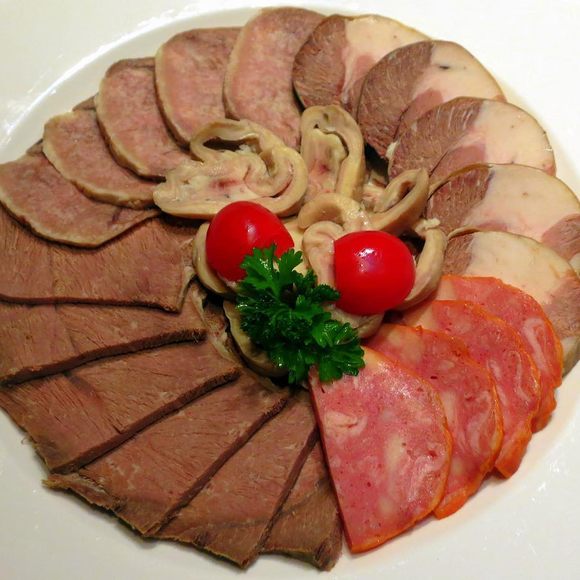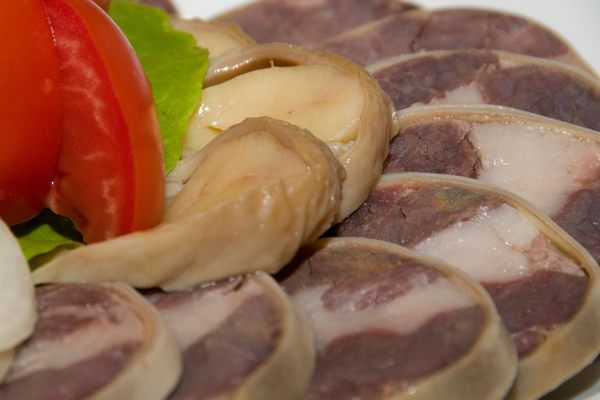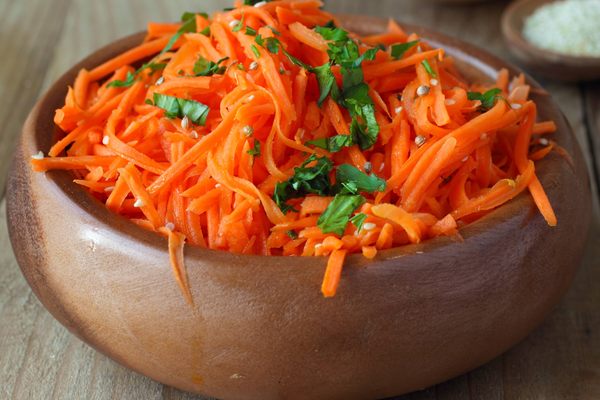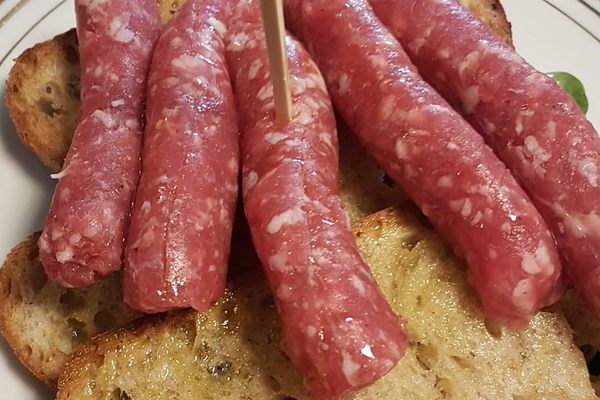Prepared Foods
Qarta
This simple dish of boiled horse intestine is prized for its unique and layered texture.
Wandering the yamarka, or markets, of Kazakstan, one is likely to spot a horse butcher’s deft hands carving flesh from bone. More often that not, those hands will belong to a woman, her expert fingers gliding knowingly and safely around the sharp edge, ruby red meat, and sinewy muscle, showing a skill rooted culinary tradition. Among her offerings, you might find shuzhuk, qazy, and, if you’re lucky, qarta.
Horses are crucial to the history and culture of Kazakhstan, dating back thousands of years to the nomads of the Eurasian Steppe. Horses and horse meat dishes are the centerpiece of Kazakh celebrations, especially weddings, when family members might receive a live horse as a gift or guests of honor might be presented with a horse’s head. In this culinary landscape, qarta is a rare dish that is renown not for its flavor, but for its rich, complex texture. The dish is simple: It’s a precise cut of a small section of the horse’s intestine, right before the sphincter, where layers of fat, tissue, and membrane combine into a unique consistency.
In fact, knowledgeable cooks and eaters so prize the mouthfeel imparted by qarta’s unique layering that the preparation and cooking process is kept as simple as possible. After being cleaned, the latter part of the intestine gets turned inside out, so that the soft fat is inside, and tied on both ends. Next, the intestine can be smoked or preserved in salt before being gently boiled in water, then simmered in broth. Chopped into thin rings, the strongly (some might say barnyard-y) flavored result has a buttery richness from the fat and a chewy-crunchy texture from the layered intestine meat. And while those who know how to traditionally prepare qarta are on the wane, searching for a bite of this dish makes for a worthwhile journey into equine-centric customs and history of Kazakhstan.
Where to Try It
-
Kazakh Restaurant Gakku
Keremet Microrayon 7, Almaty, 050065, Kazakhstan
Written By
t trevorxtravestySources
- www.researchgate.net/publication/229777746_Marriage_Markets_and_Merchants_Changes_in_Wedding_Feasts_and_Household_Consumption_Patterns_in_Rural_Kazakstan
- mek.niif.hu/12200/12240/12240.pdf
- science.sciencemag.org/content/323/5919/1332
- www.vice.com/en_us/article/ppmpy8/i-ate-horse-ass-in-kazakhstan
- www.thrillist.com/travel/nation/foods-worth-traveling-around-the-world-for#
- polosbastards.com/kazakhstan-horsemeat/













